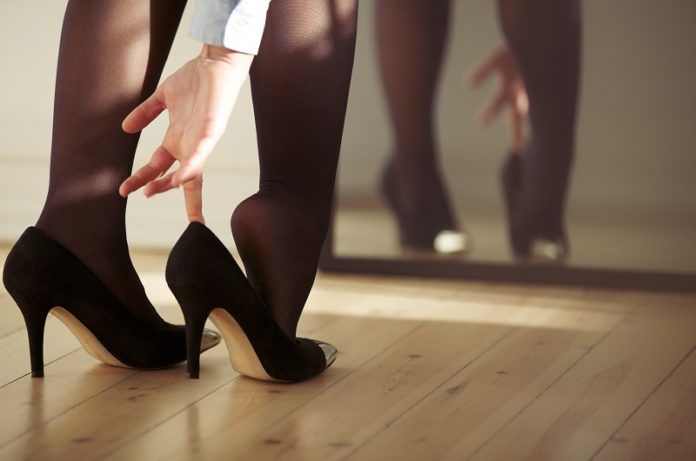Many women choose to wear high-heeled shoes despite their negative health aspects, which include lower back pain.
Researchers used a complex motion capture system to analyze the effect of high heels on gait, focusing on lumbar lordosis.
In society today, high-heeled shoes are a staple of women’s fashion.
They can be commonly seen in the workplace, at events, and at restaurants despite their discomfort.
Not only are they uncomfortable for women’s feet, but wearing high-heeled shoes increases one’s risk of falling, risk of lower limb fracture, load on the patellofemoral joint, and lower back pain.
Some attribute this lower back pain to lumbar lordosis, but this opinion is controversially discussed.
Lumbar lordosis is where the natural curve of the lower back is accentuated.
It can result from muscle imbalances and deficiencies such as weak hamstrings and tight hip flexors and is commonly associated with anterior pelvic tilt.
The physical attributes of high-heeled shoes seem to lend themselves to lumbar lordosis, however, studies have reported that they do not affect lumbar lordosis in a standing posture.
The debate on this topic led researchers to further investigate the effect of high-heeled shoes on lumbar lordosis and gait.
In this study published in Gait & Posture, Baaklini et al. studied how wearing high-heeled shoes affects women’s pelvic and spinal kinematics during walking.
Females between 20-55 years old with shoe sizes between 37 and 40 and who had not undergone surgery on their ankle, knee, hip, or spine prior to the study were included.
An experienced group and an inexperienced group were included, the experienced group having worn narrow shoes with heels greater than 4 cm for at least 12 hours per week for a year, and the inexperienced group having worn similar shoes a maximum of twice per month for less than 2 hours.
A motion capture system including markers attached to the women’s bodies and 22 cameras was used to examine gait while walking barefoot, with a 4 cm heel and with a 10 cm heel.
Using the markers, researchers were able to analyze curvature angles, rotation, and distance changes between conditions.
The researchers found a number of interesting findings, including that there were no differences between the experienced and inexperienced groups.
This supported previous studies that indicated experienced walkers did not show better biomechanical performance compared to inexperienced walkers when wearing heeled shoes.
In terms of pelvic biomechanics, they slightly worsened when comparing low-heeled shoes (4 cm) to barefoot, but to a minor extent where researchers could argue that 4-7 cm heeled shoes can be worn safely without significant detriment to safety, balance, and mobility or comfort.
Further studies could be done regarding muscle strain and time to adaptation to more specifically determine where high-heeled shoes become dangerous.
Finally, lumbar lordosis was not found to be increased by wearing high-heeled shoes.
In fact, maximum lumbar curvature actually decreased from barefoot to low-heeled shoes to high-heeled shoes.
This was true for both inexperienced and experienced walkers.
These results indicate that the onset of lower back pain associated with wearing high-heeled shoes is not due to lumbar lordosis and is caused by other biomechanical issues.
Written By: Wesley Tin, BMSc


